It’s no contest that sushi is one of the most well-recognized Japanese dishes outside of the country. But sushi is also one of the most popular dishes among the locals of the Land of the Rising Sun, as well! So if you’re planning your next Tokyo food tour, and sushi’s on the menu, let’s first discover what this delightful cuisine is all about, and explore 10 different kinds of sushi you can try on your next trip to Japan!
What is Sushi?
The word sushi is actually a compound of the Japanese words su (“vinegar”), and shi (a shortened version of the word meshi, which means “cuisine” or “meal”). Nigiri sushi, the most traditional kind of Japanese sushi dish, is a style of cuisine where thin slices of raw fish (and other seafood) are laid over shari, delicious and slightly sweet, vinegared rice mounds, which given sushi its shortened name.
Sushi is often eaten with soy sauce and wasabi, but certain types of fish are sometimes served with other, more specialized condiments as well.

Also, although the most common kind of seafood that is served when eating sushi in Japan is raw, you can still find cooked sushi options, as well. There is also seafood sashimi, which is served without the rice – just raw fish or seafood that is thinly sliced and arranged beautifully with a side-serving of soy sauce and wasabi as flavor emphasizers.
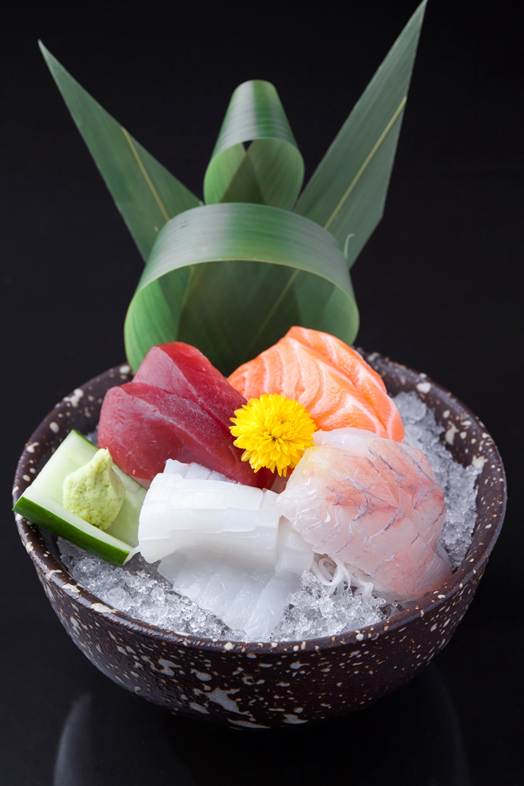
Tokyo locals enjoy sushi and sashimi at a variety of restaurants, from izakaya to specialized sushi restaurants (including the world-famous “conveyor belt sushi” style restaurants). Sushi is also a common and healthy meal that can be found in supermarket bento boxes, and freshly made every day at your local convenience store.
Also read: Izakaya Alleys in Japan
New to sushi, or a veteran looking to try something new? Here’s 10 different kinds of sushi to try on your next Tokyo Food Tour!
1. Shake – Salmon (everyone’s favorite!)

Salmon sushi is known for its soft, rich, lightly buttery flavor. While not an original or traditional Japanese sushi option since it was first introduced in the 1980s, salmon sushi has become a celebrated mainstay of everyday Japanese cuisine! Sometimes, the fish is also seared with a blowtorch, so that it has a lightly charred outer surface that brings out the aromas before you take that first perfect bite!
2. Maguro – Tuna (the traditional Japanese favorite!)
Tuna is undoubtedly one of the Japanese’s favorite fish. But did you know that there are 5 different species of tuna? The term maguro generally refers to any of these 5 species, and maguro sushi can be found in any Japanese sushi restaurant or izakaya.
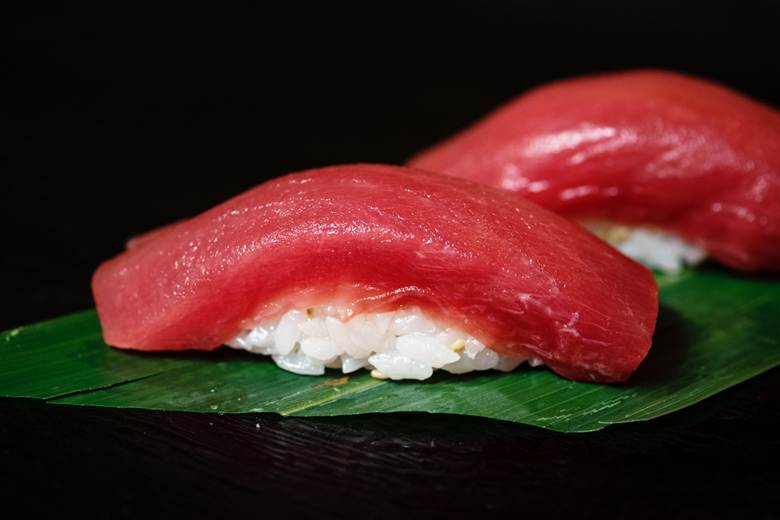
When you order “maguro sushi”, most restaurants will automatically assume that you mean lean, red tuna, also known as akami. This cut is high in protein and low in fat, and features a smooth texture with a natural umami flavor. Many Japanese people love this cut of tuna the most, as it allows you to appreciate the flavors of a quality aged fish!
3. Chūtoro and Ōtoro – belly of the bluefin tuna
The most prized of the 5 species of tuna is the bluefin tuna, with winter catches being more coveted due to the rich fattiness of the fish.
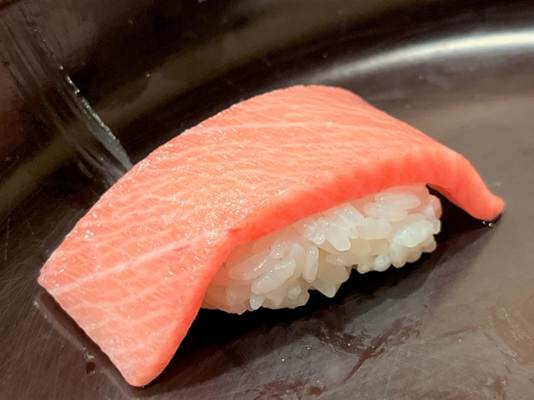
Chūtoro refers to the middle-belly of the bluefin tuna. It has a light marbling, and is silky, buttery, and smooth. These little accents complement the natural umami of this tuna cut, giving rise to exquisitely complex flavor profiles that are only intensified when your slices of chūtoro are dipped in soy sauce or topped with grated wasabi. This one’s a truly gastronomical experience!
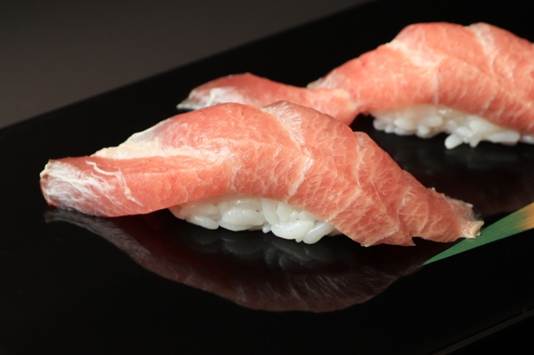
Ōtoro refers to the fattiest part of the bluefin tuna’s belly, and its appearance is almost like a pink, marbled steak. Rich in fat, buttery, smooth, and slightly sweet on the aftertaste, this cut simply melts in your mouth when you eat it – a decadent experience full of rich umami flavor profiles!
It’s not surprising that these cuts of bluefin tuna are the most expensive, given their limited availability and high quality. As bluefin tuna is a massive fish, as well, it is difficult to butcher and slice the meat so thinly. Proper sushi preparation requires many years of experience and expertise, and as a result, the Japanese typically only enjoy these varieties of tuna sushi on special occasions. But rest assured that there will be plenty of places in Tokyo where you can try out the best tuna cuts available!
4. Hamachi – Japanese amberjack
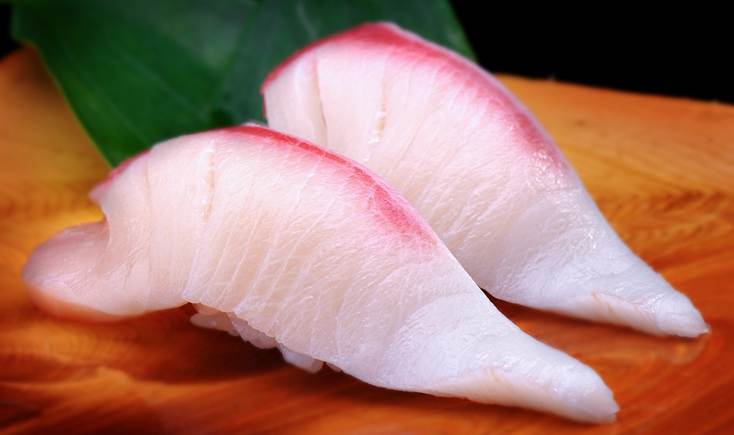
Hamachi sushi is made with Japanese amberjack (sometimes known as yellowtail fish). It is a white fish with a firm texture, and a thick, creamy flavor. It pairs well with a variety of vegetables and is often served with negi (finely chopped green onions) and citrus peel, to bring out more of its naturally rich flavors. This cut is a hallmark of many sushi restaurants throughout Japan.
5. Aji, Shima-aji – Japanese Horse Mackerel
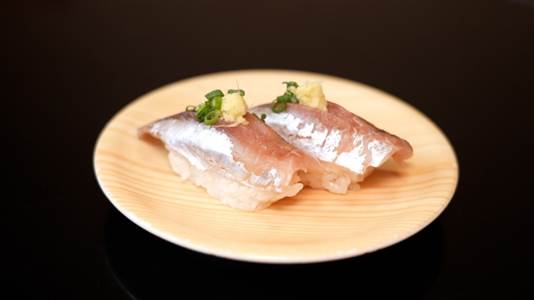
Japanese Horse Mackerel, or shima-aji, has shiny, silvery skin. The aji is sometimes marinated with salt and vinegar, and it might be served with negi and a small dollop of grated ginger on top, as well, which helps to reduce the “fishy” taste of this species of fish. Even so, this type of sushi has a slightly creamy mouthfeel, with a sweet, clean aftertaste, making it an expensive sushi item that you’ll rarely find in your supermarket bento!
6. Engawa – Halibut side skirt
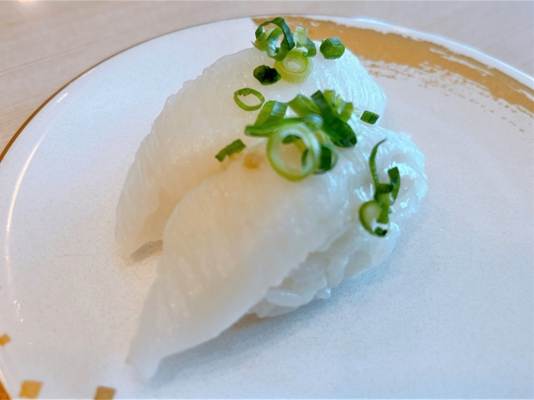
Engawa is another one of the more expensive cuts of sushi, made from the fin muscles of a flounder. It has an initially crunchy texture that immediately dissolves into a smooth, sweet taste on the palate. This cut of sushi is usually available only in the wintertime, given that this is the peak season for flounder fishing off the coast of Tokyo and further up the coastline, in northern Japan. Engawa is sometimes served after searing with a blowtorch, which brings out more complexities in its flavor!
7. Katsuo – Skipjack Tuna
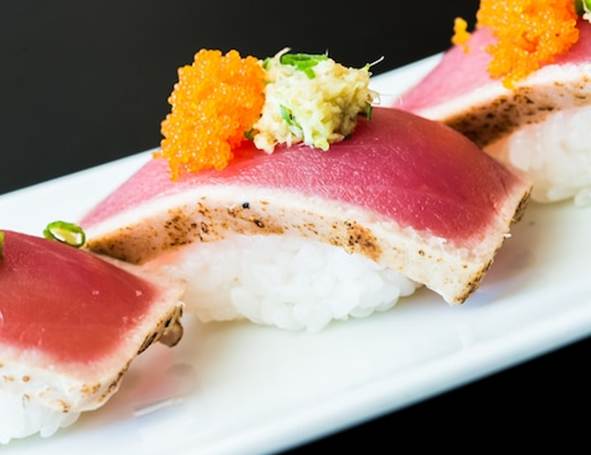
Katsuo sushi is made with skipjack tuna, or bonito, and it has a deep and distinct flavor. It is full of umami and can be served in any number of ways, including as sashimi. One of the most popular serving styles in Tokyo, though, is to sear the fish on the outside, before thinly slicing it and serving it upside down as sushi. Usually, the fish is topped with negi and grated ginger, and it pairs well with soy sauce and wasabi.
While on your Tokyo food tour, you’ll likely encounter Katsuo in many other varieties. This fish can also be dried and cut into crumbling flakes, and these bonito shavings usually garnish Japanese street food dishes like takoyaki, okonomiyaki, and yakisoba. Bonito can also be used to make delicious and tasty broths, known as dashi, which are the basis of many Japanese soups.
Also read: Taste Tokyo: 10 Street Foods and Where to Find Them
8. Ika – Squid
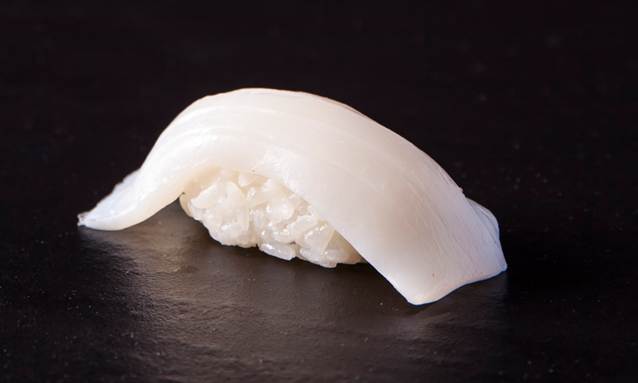
Ika sushi is made with squid instead of fish, and so it often has a pure white, even slightly translucent look. Firm yet tender, ika has a sweet taste that only intensifies as you chew it. There are many kinds of squid that are served as sushi, and sometimes, depending on what species of squid you choose, it may be boiled or steamed, and take on a slightly pink or purple hue!
9. Amaebi – Sweet Shrimp
There are many kinds of shrimp-based sushi, as well. Sometimes, the shrimp is served boiled, steamed, or fried on top of a little pile of rice, but one of the most classic shrimp sushi is amaebi sushi, or “sweet shrimp” sushi. These raw shrimp bites are usually fished from the cold, northern waters of Japan, and are best enjoyed when fresh and raw!
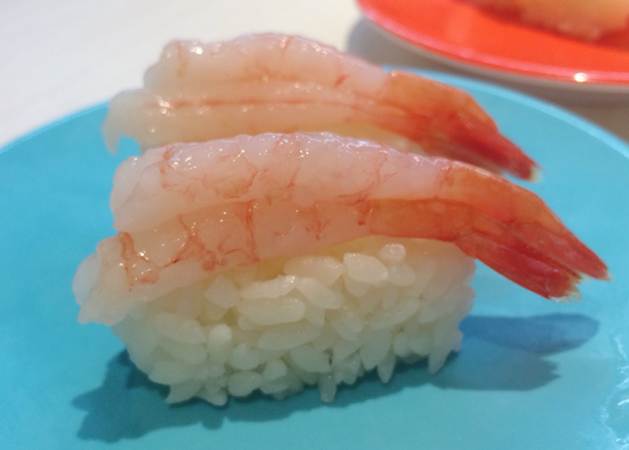
Amaebi has a very delicate texture, and it is light pink and slightly translucent when served. It is soft when eaten, and very sweet in taste, but if you combine it with soy sauce, the salt and umami compliment the fresh sweet taste of the shrimp, making it one of the crowd favorites!
10. Ikura – Salmon roe
For seafood items that tend to lose their shape easily, gunkanmaki, or “warship-style,” is usually the way these sushi items are presented. Rice sits at the bottom, and a border of nori (seaweed) forms a bowl in which these seafood items sit. Sushi like ikura (salmon roe) and tobiko (flying fish roe) are often served in this style!
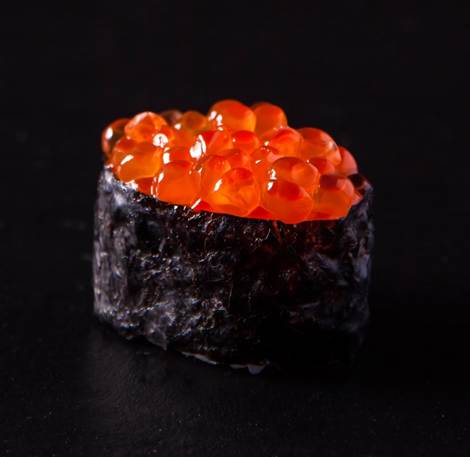
Known for its vibrant color and delicate texture, ikura sushi is made from salmon roe, and it has a salty, savory flavor that pairs well with soy sauce and wasabi. Be careful, though – every little ikura bursts in your mouth like salty little fireworks!
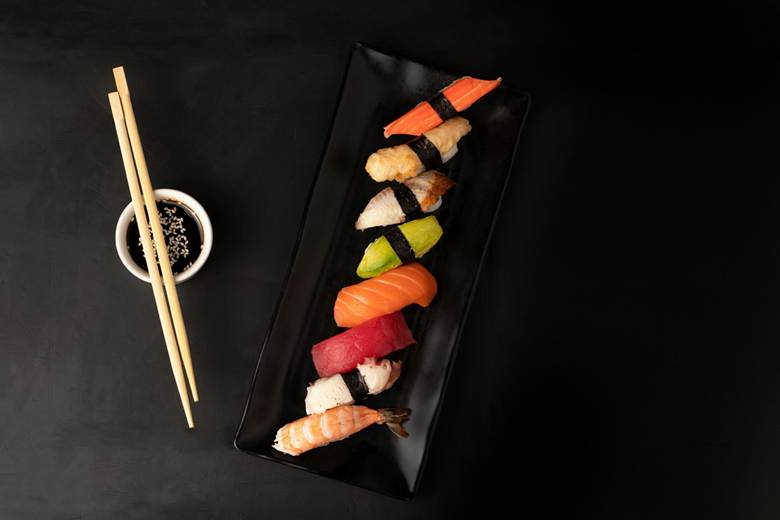
If you’re looking to experience a popular Tokyo food tour featuring the best sushi to be had, one of the places to visit is the Ameyoko Market in Ueno! With excellent options for sushi and authentic Japanese street food besides, the prices are reasonable and the sushi is delicious! Best Experience Japan offers exclusive Tokyo food tours, taking you on the best hidden paths to find some of the most delicious and enticing foods that the Land of the Rising Sun has to offer! Try foods that the locals love, in the heart of the city – an experience like no other!
